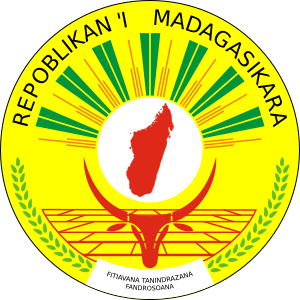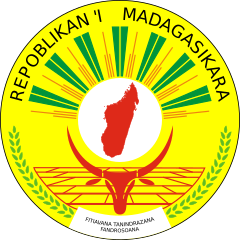Tsiroanomandidy, Madagascar


2048px-Seal_of_Madagascar.svg.png
Visit the guide

Fișier:Flag of Madagascar.svg - Wikipedia
Visit the guide

1024px-Seal_of_Madagascar.svg.png
Visit the guide

768px-Seal_of_Madagascar.svg.png
Visit the guide

480px-Seal_of_Madagascar.svg.png
Visit the guide

Plik:Seal of Madagascar.svg – Wikipedia, wolna encyklopedia
Visit the guide

Plik:Seal of Madagascar.svg – Wikipedia, wolna encyklopedia
Visit the guide
population: 0.08 million
extension: 15,380 square kilometers
Museums
If you're in Tsiroanomandidy and interested in visiting museums, one nearby option is the Museum of Tsiroanomandidy. If you are looking for more museums in Madagascar, you can also consider the Museum of Art and Archaeology in Antananarivo or the National Museum of Natural History in Antananarivo.
Food
Some of the most recommended and popular dishes to try in Tsiroanomandidy, Madagascar are:
1. Ravitoto - a traditional dish made with mashed cassava leaves, pork, and various spices.
2. Romazava - a hearty beef stew made with various greens such as spinach, mustard greens, and cassava leaves, along with ginger, garlic, and local spices.
3. Akoho sy voanio - a dish consisting of chicken cooked with onions, garlic, and ginger, then served with rice.
4. Henakisoa sy ravitoto - a combination of pork and cassava leaves, often served with rice.
5. Koba - a sweet snack made from ground peanuts, rice flour, and sugar, all wrapped in banana leaves.
These dishes are considered staples of Malagasy cuisine and are enjoyed by locals and visitors alike.
Activities
Some fun activities that local people enjoy in Tsiroanomandidy, Madagascar include:
1. Visiting the traditional market (fifohazana) to shop for fresh produce and local handicrafts.
2. Exploring the nearby countryside on foot or by bicycle to see rice paddies, waterfalls, and other natural attractions.
3. Attending a performance of traditional Malagasy music and dance at a local venue.
4. Taking part in a community event such as a religious ceremony or a festival celebrating local culture and traditions.
5. Joining a guided tour of the town's historical sites, such as the ancient royal palace or the colonial-era buildings.
